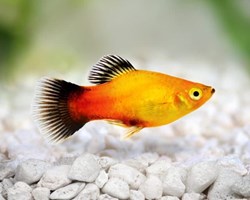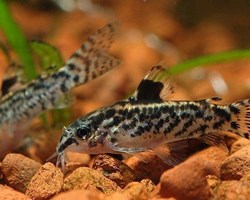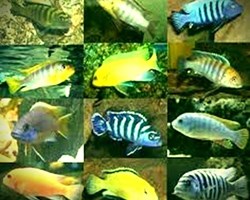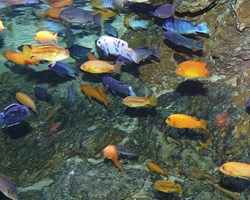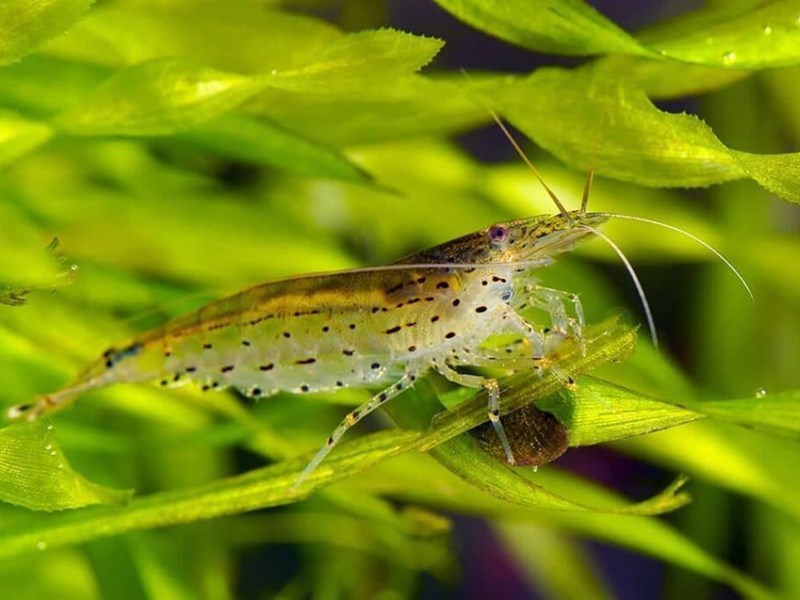
INDEX:
1.- CHARACTERISTICS OF CARIDINA JAPÓNICA MULTIDENTATA SHRIMPS.
2.- MORPHOLOGY OF CARIDINA JAPÓNICA MULTIDENTATA SHRIMPS.
3.- CARE OF THE AQUARIUM.
4.- NUTRITION OF CARIDINA JAPÓNICA MULTIDENTATA SHRIMPS.
5.- REPRODUCTION OF THE CARIDINA JAPÓNICA MULTIDENTATA SHRIMPS.
6.- CARIDINA JAPÓNICA MULTIDENTATA SHRIMPS CARE.
7.- BEHAVIOR OF JAPÓNICA MULTIDENTATA SHRIMPS.
8.- DISEASES OF CARIDINA JAPÓNICA MULTIDENTATA SHRIMPS.
1.- CHARACTERISTICS OF CARIDINA JAPÓNICA MULTIDENTATA SHRIMPS:
Common name: Amano Shrimp
Scientific Name: Caridina multidentata (japonica)
Family: Caridines.
Distribution: Japan
Size: Between 3-6 cm.
The Caridina Japonica Multidentata is a freshwater shrimp discovered in the Yamato River, Japan, also native to some riverbanks in Korea and Taiwan.
It is native to Asia and is one of the most popular invertebrates in the world aquarium market.
In its natural state, it lives in large groups of thousands of specimens.
This invertebrate has a translucent gray color that changes hue throughout the day.
The Caridina multidentata, Stimpson, 1860, previously called Caridina japonica or Amano shrimp, by the Japanese aquarist Takashi Amano, is undoubtedly the most popular freshwater invertebrate, along with the Pomacea canaliculata or apple snail, and in quotes the easiest to find in specialized stores.
The small shrimp that concerns us, between 3 cm males and 5 females, with a life expectancy between 3 and 5 years, is a gregarious animal that we must keep in a group with very good adaptation to the community aquarium and needs of maintenance within the reach of any level of hobbyist.
Although it has a reputation for eating algae, we should not fix our interest on this aspect since it will not end our pests by itself.
It is much more advisable to test the nutrient concentrations, effectively maintain our mechanical filter loads and be constant with periodic water changes.
In addition, its interest in algae is really limited to a specific species, being much more effective as a detritivore or scavenger.
This tonality will depend on the nutrition that each specimen receives.
Its shape is elongated and it is the Caridina that reaches the largest size.
In addition, the females can reach 6 cm while the males have a more contained size that does not exceed 4 cm.
It has 4 very sensitive front antennas with which it is capable of detecting remains of animals and food inside the aquarium.
It also has some brown spots along its entire body that are distributed longitudinally.
This species of freshwater shrimp can be found in shallow waters of ponds and lagoons. They can live in sweet environments, but they also tolerate higher salinity. Its natural habitat is in the Yamato region, although some populations can be found in the Cora and Taiwan locations.
Due to its great fame in the Takashi Amano water park for its landscape properties, its use in aquariums has spread. It is commonly known as Amano shrimp or prawn.
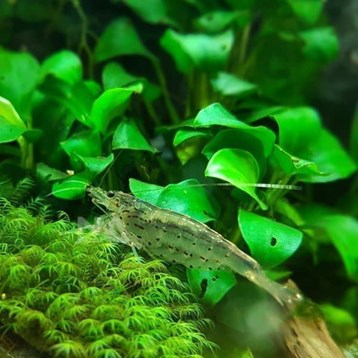
2.- MORPHOLOGY OF CARIDINA JAPÓNICA MULTIDENTATA SHRIMPS:
Speaking of its morphology, we can say that its body is similar to the rest of both marine and freshwater prawns.
It has a cephalothorax with a white stripe that ends in the tail.
Perhaps this is the most distinctive part of the shrimp. In the part of the head we find all the organs that are vital for the survival of the animal. In this area we find four pairs of legs to use to move.
The skeleton is called the exoskeleton and under it we find the abdomen and its muscles. In this place where it has a kind of skirts that it uses for swimming. Its tail has several distinguishable black and white spots and is
made up of Pleopods. These elements are used to change direction abruptly when swimming and being chased by a predator.
Caridina japonica has most of its body transparent.
Its coloration is able to vary as a result of its type of food.
The difference between males and females lies in the spots that decorate it.
While the females have their spots longitudinally, the males have them scattered in no apparent order.
- Shrimp for all levels of fans.
- It helps us with the cleaning of the aquarium.
- Great consumer of filamentous algae.
- It is not aggressive with other species.
- She is a scavenger
- It tolerates variations in water parameters quite well.
- It is resistant to temperature fluctuations.
- Does not breed in captivity.
It has a semi-transparent grayish body.
The base hue can change due to lighting and food.
It is typical of the species to present black and maroon dots on a regular basis and aligned throughout the entire body.
A simple identification is the white line that runs from the carapace behind the eyes to the birth of the Telsón, base of the tail.
Like all shrimp, the Caridinas are subject to molting to continue their development, this molting leaves behind an exact copy of the invertebrate, this empty shell will be devoured to obtain the calcium that forms it.
In these changes, the small prawns recover those severed members.
The younger the specimen, the greater number of molts it performs per year, stabilizing downwards in the final stage of life.
These little shrimp are gregarious.
This indicates the need to maintain a small group of at least half a dozen individuals.
In nature they form banks of hundreds of specimens.
They are peaceful animals that coexist perfectly with the fish in the aquarium as long as the latter do not attack them well because they consider them food or for defense of the territory.
In either case, the alarm signal would be not seeing our shrimp colony because they are permanently hidden.
Our specimens do not have any type of defense against aggression such as the Macrobrachium and its large claws.
The leisurely pace of life of our small shrimp will only be affected for three reasons:
- The proximity of the fertilization of a female with eggs that will release signal pheromones for the attention of the males.
- the presence of a carcass or dying fish.
- A recent water change that will activate your vitality.
3.- CARE OF THE AQUARIUM:
Temperature: Between 23º and 25º
pH: 6.5 - 7.5
Kh: 2-4
Gh: 5-10
It is important to be careful with CO2 concentrations.
Since if the rate of bubbles per second is strong enough, there will be an increase in oxygen in the water column and they can die.
They can be kept in community aquariums although we must be careful not to mix them with natural predators of crustaceans.
The aquarium does not necessarily have to have gravel, although if it does not have it, we must set the filter to a minimum so that it does not generate current.
It is necessary to have a good amount of java moss and the aquarium well planted in general.
It is also interesting to have a trunk since they like a lot of the algae that grows on them.
On the other hand, they also really like Cladophora aegagropila, a ball-shaped plant. They will spend a lot of time grazing on it.
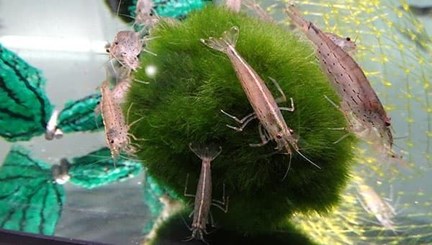
In general, a “Dutch” type planted aquarium will be ideal for these invertebrates.
These small prawns are not really demanding with the quality of the water, adapting to quite different degrees of hardness and pH.
Obviously, very acidic environments with very low hardness complicate their moulting, being able to see themselves trapped during the moult and end up drowning.
Neutral waters or pH of up to 6.5 with a moderate hardness of 6 to 12º gH would be suitable. Temperature between 23 and 27ºC.
It is very sensitive to chemical compounds, so any treatment with derivatives or containing copper must be eliminated. They are also sensitive to chlorine and lead.
Although they have a reputation for eating algae, this facet is really secondary. They will accept all kinds of food that they can reach at the bottom of the aquarium.
They are extraordinary scavengers that will help keep the water clean of organic waste before becoming part of the nitrogen cycle.
Using nutritional supplements specially designed for your needs from time to time is a very good practice.
Regarding the anti-algae fertilizers in Glu Glu Pet we recommend:
- Flourish Excel.
- ANTI ALGAE Blue Exit by Easy Life against cyanobacteria. 250ml.
- ALGEXIT anti-algae from Easy Life 250ml.
- JBL ALGOL.
- IT WILL BE FLORENA.
- SERA SIPORAX ALGOVEC.
- TETRA ALGETTEN.
- TETRA ALGUMIN 100ml.
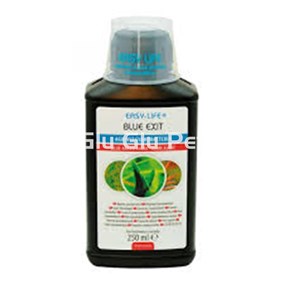
4.- NUTRITION OF CARIDINA JAPÓNICA MULTIDENTATA SHRIMPS:
A vegetable supplement plays a leading role in their diet.
It is a filamentous algae and not the typical black or brush algae.
It is generally tolerant of other plants if it does not have food.
They have also been found feeding on Riccia.
It has even been seen eating dead animals and fish larvae.
In aquariums, its diet must be subject to its effectiveness as a controller of filamentous algae.
These prawns are not good companions for large fish with an aggressive character.
If we place them with them, they will not hesitate to eat them as food.
It feels a great attraction for filamentous algae, therefore, if we have an aquarium with an excess of algae of this type, they will be ideal to kill them.
Like the rest of the varieties of the Atyidae family, they are omnivores.
In general, it will feed on algae and food debris that it finds at the bottom of the aquarium.
Accepts all types of food such as dried flakes, pellets, frozen brine shrimp, red mosquito larvae, boiled vegetables (such as spinach or carrots) and bottom fish feed.
What we can do best is feed them with special food for this type of invertebrate, in this way we will ensure that they have a balanced diet and can grow correctly.
- Tetra Crusta Menu.
- AZOO PREMIUM RED LARVA 130ml.
- AZOO MAX SHRIMP BREED.
- AZOO PLUS ARTEMIA.
- SERA SHRIMPS NATURE (prawn food).
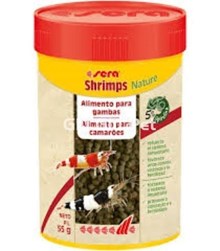
5.- REPRODUCTION OF CARIDINA JAPÓNICA MULTIDENTATA SHRIMPS:
As for its reproduction, it is perfectly viable in captivity.
We must be extremely careful to keep the female in another aquarium before the eggs hatch.
Otherwise, the rest of the specimens in the tank will have a food rich in protein.
Their sexual maturity is reached after 5 months of life.
It can be detected that the female is pregnant if her belly turns dark in color.
This is the signal that tells us that the eggs are beginning to form.
Depending on the temperature of the water, the hatching of the eggs takes an average of 4 to 6 weeks.
Adult prawns can live perfectly well in fresh water.
The larvae need seawater at first for their development.
The ideal proportion of salt is 30 grams per liter of water.
When they reach a size greater than five millimeters, they must be prepared to transfer to fresh water.
To do this, water is added little by little to reduce the amount of salt.
Larvae should never be transferred from saltwater to freshwater all at once.
Caridina japonica hatchlings feed on live or commercial plankton.
They can also be fed artemia nauplii or cypclop eeze.
Once they have grown above 1.5 centimeters they can be incorporated into the general aquarium with their companions.
If it is important that the other fish are not large or they will end up eating them.
Its life expectancy is close to 3 years, although it does not usually exceed two in captivity.
They are prawns that are very easily clouded, but getting shrimp out is a practically impossible task.
Water with different degrees of salinity is needed.
In the case of our aquariums, the eggs, as they do not come out ahead, are lost in the substrate, decomposing.
Although this is not harmful to the ecosystem.
When the female is fertilized correctly, the eggs inside her will be transferred to the abdomen, where they will be fanned by the females themselves so that they are well oxygenated at all times.
In the first few days, the eggs will be dark in color, but as time goes on, they will turn yellowish.
After about 4 or 6 weeks, depending on the temperature of the water, the eggs will hatch and be abandoned by the female.
Ideally, to ensure that all the larvae survive, we must transfer them to brackish water, 30 grams/liter of salt, between days 8 and 12 after hatching.
After about four weeks in said brackish water, we will be able to return the small prawns to fresh water.
Reproduction of Caridina Multidentata can be achieved in totally fresh water, but we will not achieve the same range of success as if we do it in brackish water.
During the first 16 weeks of life, they should be fed microalgae, artemia nauplii and finely ground powdered food.
After 16 weeks, we can introduce the small prawns along with the rest of the adult specimens.
After 5 months from birth, they are sexually mature to be able to reproduce again.
The female carries the fertilized eggs for about 5 weeks.
Previously, it has released pheromones in the water that are very striking signals for the males, who immediately detect them and react frantically.
After the fertilization that occurs between the lucky one and the male surrounded by suitors, the female will keep the eggs in her womb until hatching.
After hatching, hundreds of live larvae are released into the water, which are carried by the water current in a planktonic manner.
In nature they are dragged towards the mouth of the rivers where the salinity increases.
In these brackish waters they develop for about 6 weeks to begin their return to their natural habitat.
In this change of dissolved salts lies the complexity of its reproduction.
Therefore, in the community aquarium, in addition to all the existing predators, the salts will not be sufficiently concentrated to contribute to their development and the formation of the exoskeleton.
6.- CARIDINA JAPÓNICA MULTIDENTATA SHRIMPS CARE
This shrimp was introduced in aquariums by Takashi Amano, hence it is also known as Caridina "Amano".
It is a shrimp whose mission is to keep the aquarium clean of algae, since it is a great eater of these.
They are prawns that adapt perfectly well to any type of decoration that we establish in the aquarium.
We can set up rocky, log, mixed Ryuboku aquariums that they inhabit without any problem.
We must bear in mind that in aquariums with logs, due to the cellulose they contain, our japonicas will acquire a brownish tone.
It is a shrimp that resists NO2 peaks well: Nitrite, in decline, never in rise.
It is advisable to introduce it into the aquarium 15 days after setting it up.
In this way they will reduce the impact of the cycling algae, especially at the beginning.
And they will help us keep this factor very controlled.
To achieve this, we must take into account the number of copies that we will need.
The most appropriate ratio of prawns per liter is as follows:
- 5 copies for 30 liters.
- 10 copies for 60 liters.
- 30 copies for 180 liters.
- 50 copies for 240 liters.
It should be noted that it is quite complex to remove algae from our aquarium with few specimens.
In general, this shrimp likes to feed on hair algae, both short, medium and long filamentous.
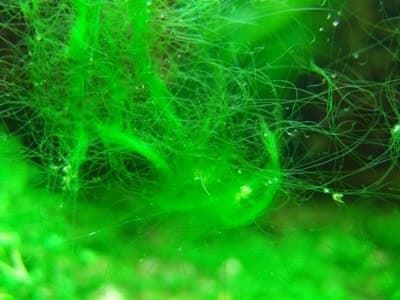
Keep in mind that if the green thread algae already has a considerable size, it will not eat it.
It is also necessary to know that it does not feed on the following varieties of algae:
- red algae
- Brush.
- Hydras.
- deer horn
7.- BEHAVIOR OF JAPÓNICA MULTIDENTATA SHRIMPS:
His character is not strong, although if he sees any fish or shrimp in poor condition, sick or unable to carry out their day-to-day activities well, he will try to catch it.
They are animals that are not aggressive and lead a very independent life with respect to the fish that we can have in the aquarium.
They also do not have tweezers so they are not dangerous.
When we feed them they behave in a very active way and with a lot of nerve to get food, they like to eat a lot.
It is a relatively large and easy to maintain shrimp that reaches up to 6 cm. in the case of females, although it is somewhat skittish.
It can live perfectly with small fish but it is not recommended to keep it with aggressive fish such as scalars, bettas or discus.
Preferably kept in a group, if not overfed it keeps thread algae in check making it very valuable in aquascaping setups.
We must always keep in mind that many fish are devourers of small crustaceans, therefore, we must be very clear about which species are compatible with Caridina Multidentata. In general, any type of small or medium sized school will be compatible, such as Tetra Neon, Guppies, Mollys or Nannostomus eques.
You also have to be very careful with bottom fish as some species can scare us by making these small shrimp their daily diet. A perfect tank mate would be some type of snail.
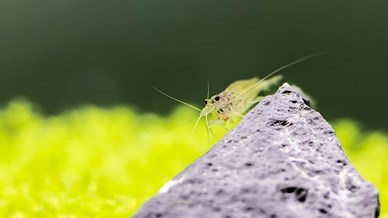
8.- DISEASES OF CARIDINA JAPÓNICA MULTIDENTATA SHRIMPS.

